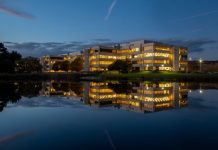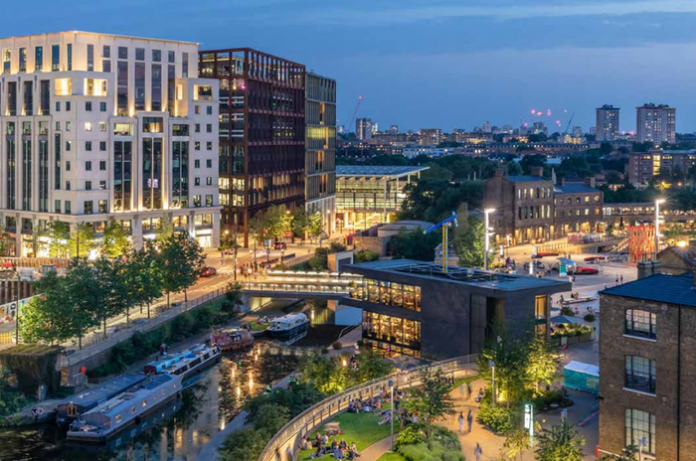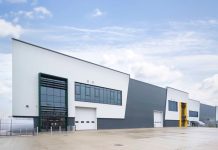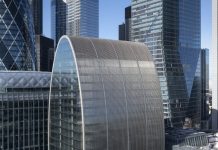King’s Cross, London’s 67-acre neighbourhood, celebrated its 10-year anniversary on Friday 8th October 2021. The milestone marks a decade since the opening of The Granary Building in Granary Square, home to Central Saint Martins, and the official reopening of the King’s Cross district to the local community and to London.
The anniversary also marks 20 years since the publication of the Principles of a Human City. Published in 2001, this pioneering document set out the 10 principles which have underpinned the design and development of King’s Cross, with a focus on creating a robust urban framework and lasting new place; and promoting accessibility and a vibrant mix of uses.
Over the past two decades, King’s Cross has undergone a complete transformation and is regarded as an exemplar for urban regeneration. What was a derelict and underused railway and industrial site, the King’s Cross Estate now boasts 2.7 million sq ft net of office, retail, food and drink and leisure space, providing capacity for 18,000 jobs, and is home to c.120 different businesses. King’s Cross is a key office district for London and has established itself as a hub for creative, digital, and knowledge-based businesses, making a significant contribution to London’s place as a world city. King’s Cross is home to 2.1% of all creative, digital and cultural jobs in London’s Central Activity Zone, representing a remarkable 20,000% growth in ‘knowledge’ jobs in King’s Cross neighbourhood over the past decade. In 2021, close to 1 million sq ft of new office space was delivered, and there is currently 0% vacancy across the whole office portfolio.
King’s Cross is also a thriving residential neighbourhood, with 1,120 homes and 750 student residences. With construction of a further 623 homes and 450,000 sq ft of office space currently underway, more than 40,000 people will live, work and study in the neighbourhood when the development is complete.
The Estate has also set new standards for social and environmental sustainability. The King’s Cross partners established the King’s Cross Academy Trust, which set up and continues to run the King’s Cross Academy primary school, co-located with Frank Barnes School for Deaf Children. The Estate also runs visitor, construction skills and recruitment centres and direct the site wide energy company, Metropolitan King’s Cross. This company owns and operates the district energy centre and cooling pod for King’s Cross, supplying all homes and commercial space with heating, hot water and cooling. The district energy centre runs combined heat and power engines, now powered by renewable ‘green gas’. This is just one reason why the Estate boats more BREEAM ‘Outstanding’ buildings than anywhere else in the UK.
The Estate team looks after the new streets and public spaces, run a wide range of arts and events programmes, facilitate street food and markets and much, much more. It provides sports facilities, for all, including the Handyside indoor sports facility, used by the King’s Cross Academy primary school and others that live and work in King’s Cross.
The regeneration of King’s Cross has sensitively brought together the area’s rich industrial past – evidenced in the 20 repurposed historic buildings, including the iconic Gasholders London and Coal Drops Yard, the Victorian coal buildings which have been reimagined by Thomas Heatherwick – with modern architecture inspired by the history of King’s Cross.
Public realm changes have led the regeneration of King’s Cross, with the establishment of much-loved spaces such as Granary Square, Cubitt Square, Cubitt Park, Gasholder Park, and the Bagley Walk ‘high line’. More than 40% of the Estate is public realm, including green parks and gardens, new public squares and streets. Granary Square and its iconic fountains lie at the heart of the Estate. The popularity of King’s Cross is evidenced by the 41 million visits to Granary Square since its opening, with a total of 10.4 million visitors in 2019 alone.
Speaking about King’s Cross and its anniversary milestone, Sadiq Khan, Mayor of London, said: “King’s Cross is a vibrant area with a distinct character and lots of energy. In the past ten years it has completely transformed into not only a key office district for London, but a thriving residential neighbourhood. The urban regeneration of King’s Cross is a prime example of just the kind of innovation that will help encourage Londoners and domestic and international tourists back into the centre of our city and support our economic recovery from this devastating pandemic.”
Adding to this, Robert Evans, CEO at King’s Cross and Joint Managing Partner of Argent, commented: “Twenty years ago, in July 2001, I and others wrote some ‘Principles for a Human City’ about our approach to King’s Cross. We stated an objective to devise and deliver, over 15 or so years, an exciting and successful mixed-use development; one that will shape a sense, vibrant and distinctive urban quarter, bring local benefits and make a lasting contribution to London. King’s Cross should offer an urban exemplar for a sustainable world city. It should be an outstanding place to live, work or just ‘be’. It should make a significant, positive contribution to the economy, equality and the environment.
Fast forward and the King’s Cross Estate now boasts a world-class university, inspiring businesses, some 2,000 homes, an eclectic range of shops and restaurants, two schools, sport, leisure and community facilities. Bold new architecture complements powerful historic buildings and world-class public realm. Each day the Estate welcomes and attracts a mixture of students, workers, residents, shoppers, visitors and tourists. King’s Cross has a distinctive sense of place and community. It is regularly held up as a benchmark for development and regeneration in London; and we often welcome visitors from other cities, across the world, to share our approach to place-making and social value and our path to ‘net zero’ carbon.
We are proud of how we have achieved our original development objectives. In many ways, as we start the construction of our final buildings at King’s Cross, the place has already turned out even better than we hoped or expected. Increasingly, our focus now lies beyond the bricks and mortar, to providing those who live, work or spend time at King’s Cross, with the right content, experiences and services. King’s Cross shows how we can transform an urban area and improve lives with new facilities and investment, with private sector development and patient capital taking the lead, whilst working closely with local authorities and local communities.”
Paul Clark, Senior Investment Director at AustralianSuper, joint owners of the King’s Cross estate and part of the King’s Cross Central Limited Partnership, commented: “King’s Cross is the jewel in AustralianSuper’s European property investments and we are proud to have played an important part in its transformation. King’s Cross demonstrates what can be achieved through long-term investment and collaborative partnerships with a shared vision to build sustainable assets and communities. King’s Cross has set the benchmark for major urban regeneration development projects and cities to follow, and we are looking for new development opportunities that would enable us to help replicate its success globally.”
To mark the anniversary, King’s Cross will launch a retrospective ‘Then & Now’ photographic exhibition, visually telling the story of evolution at King’s Cross, utilising the imagery of long-term King’s Cross photographer John Sturrock. The exhibition will open on 9 October 2021 and is free to visitors.




















